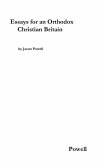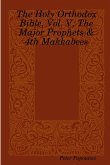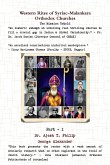The subjects addressed here include Radical Orthodoxy, the relationship between the Hebraic and Hellenic traditions, the Second Vatican Council, Catholicism as completing and transcending the various strands of Protestantism, Early Modern English Catholic literature, English Catholic literature of the nineteenth and twentieth centuries, the Established status of the Church of England, the Jacobite roots of the Radical traditions in British politics, Opus Dei and the Left, the Catholic origins of modern science, and the Church's record on HIV infection in Africa, on the Holocaust, and on the Roman and Spanish Inquisitions. "An erudite defence of the Catholic position, this collection of theological, philosophical, literary and historical essays invites the reader to dive deep into the intellectual issues that challenge the Church today." Fr Dwight Longenecker, Catholic priest, blogger and author of The Quest for the Creed and The Romance of Religion.
Hinweis: Dieser Artikel kann nur an eine deutsche Lieferadresse ausgeliefert werden.
Hinweis: Dieser Artikel kann nur an eine deutsche Lieferadresse ausgeliefert werden.








